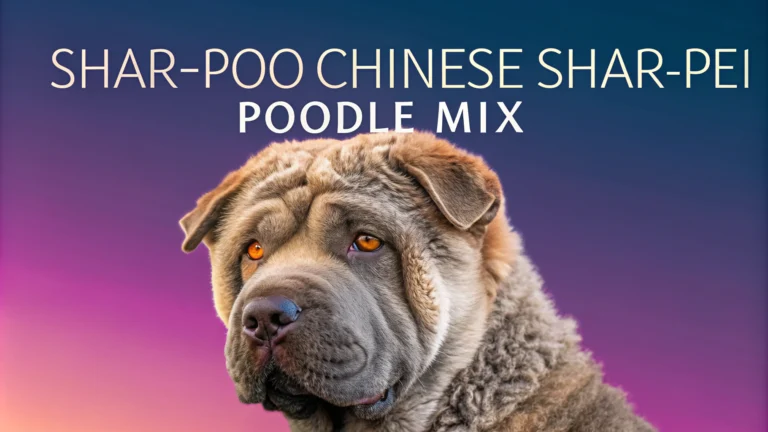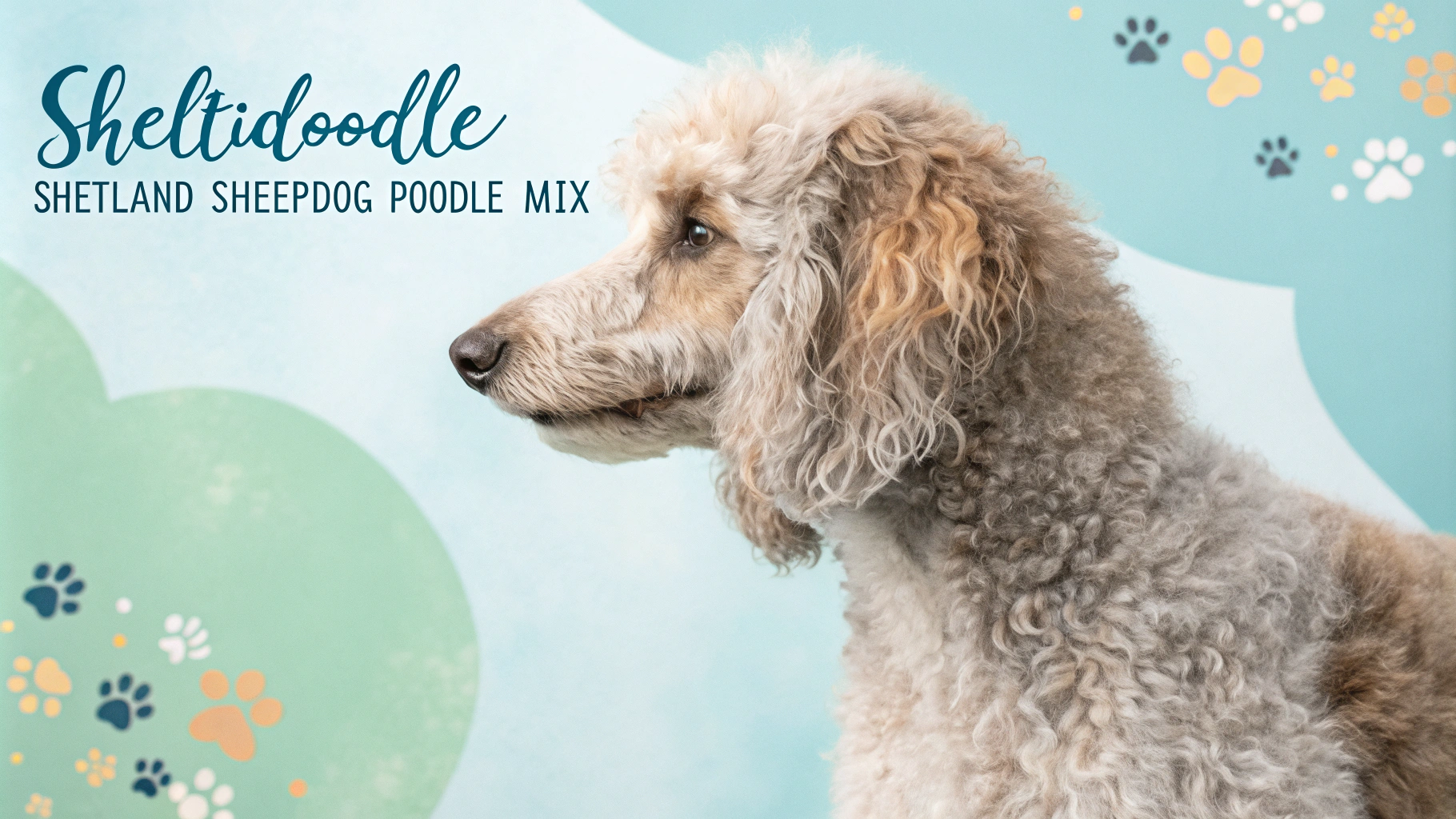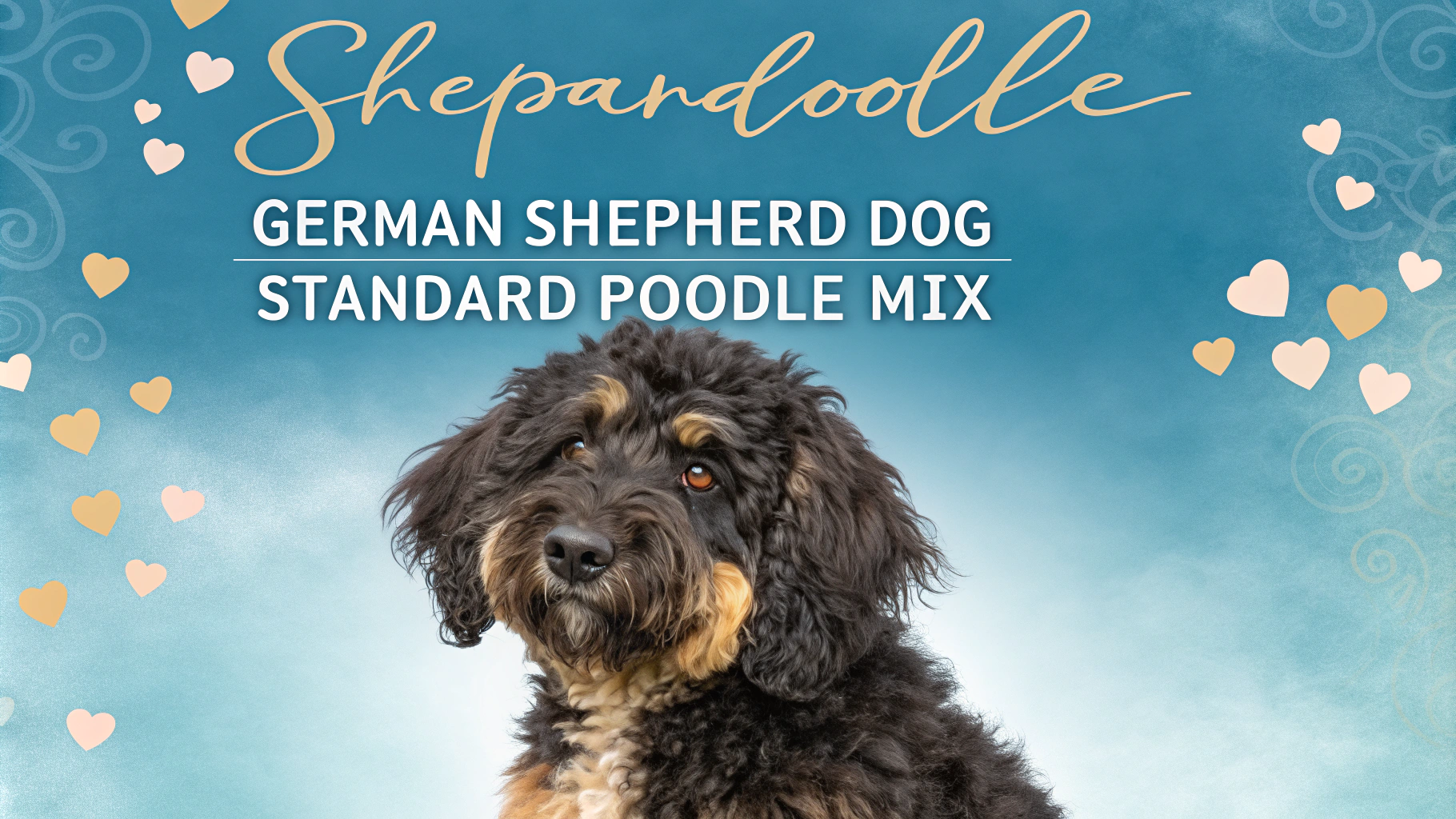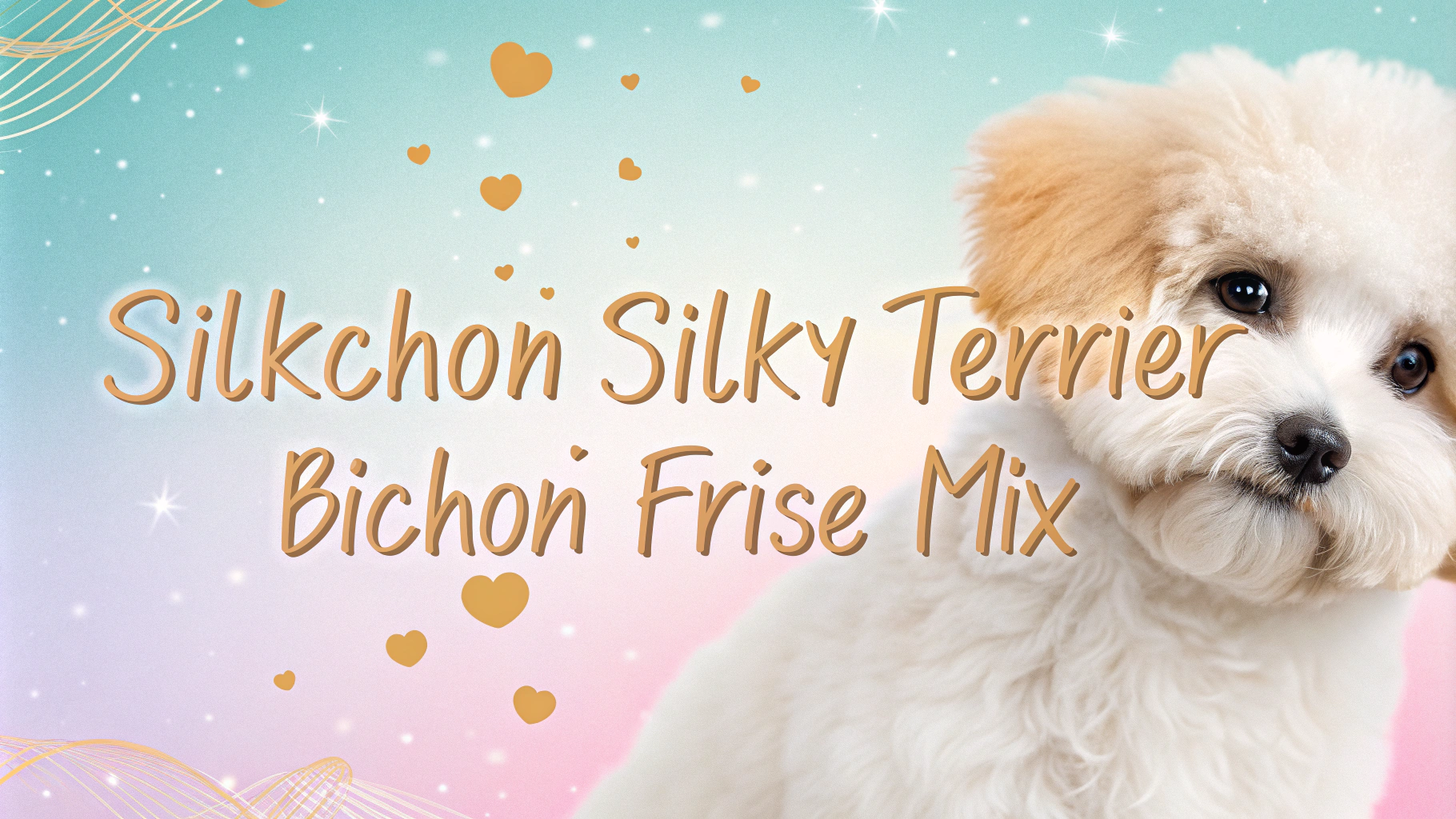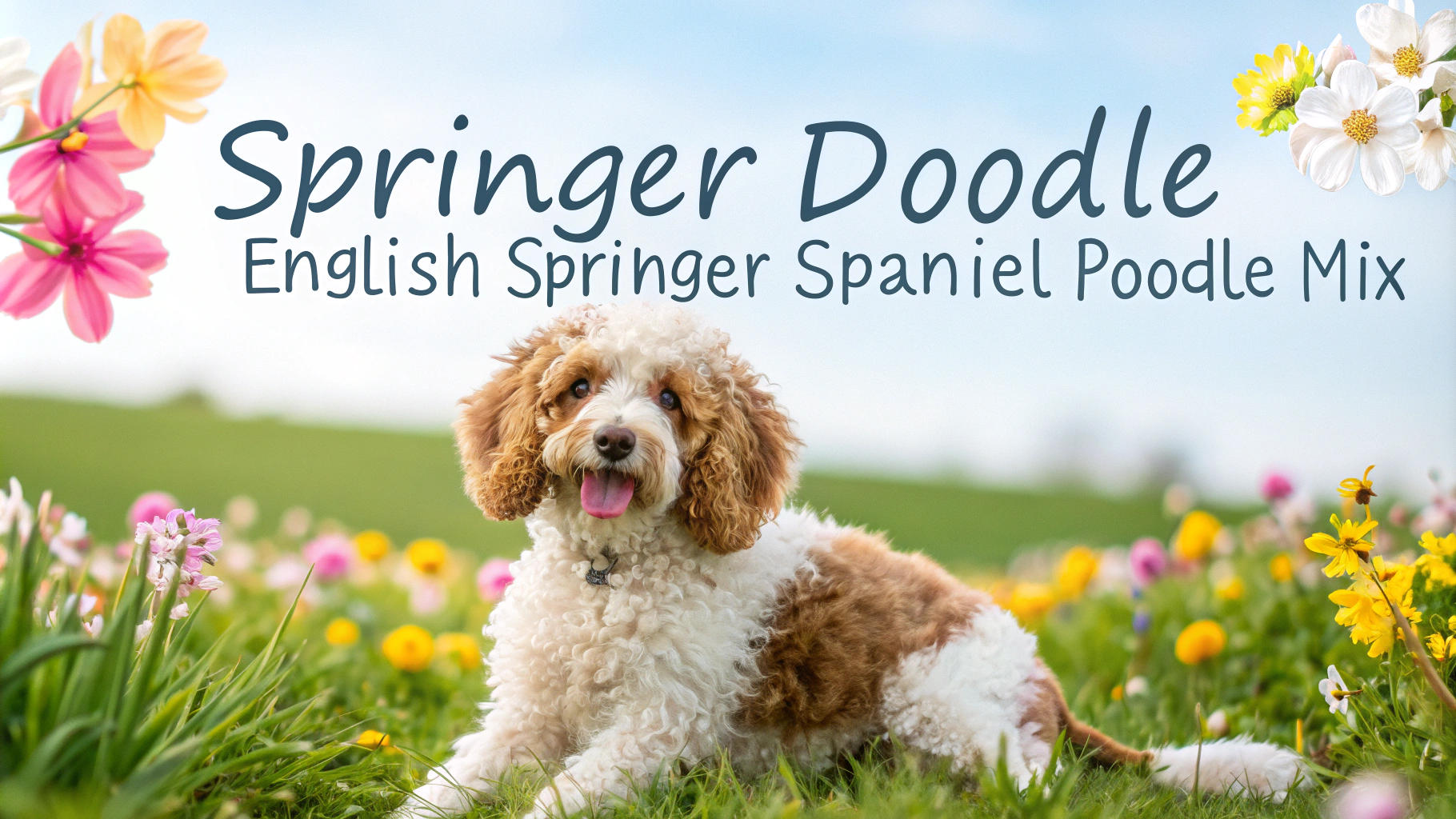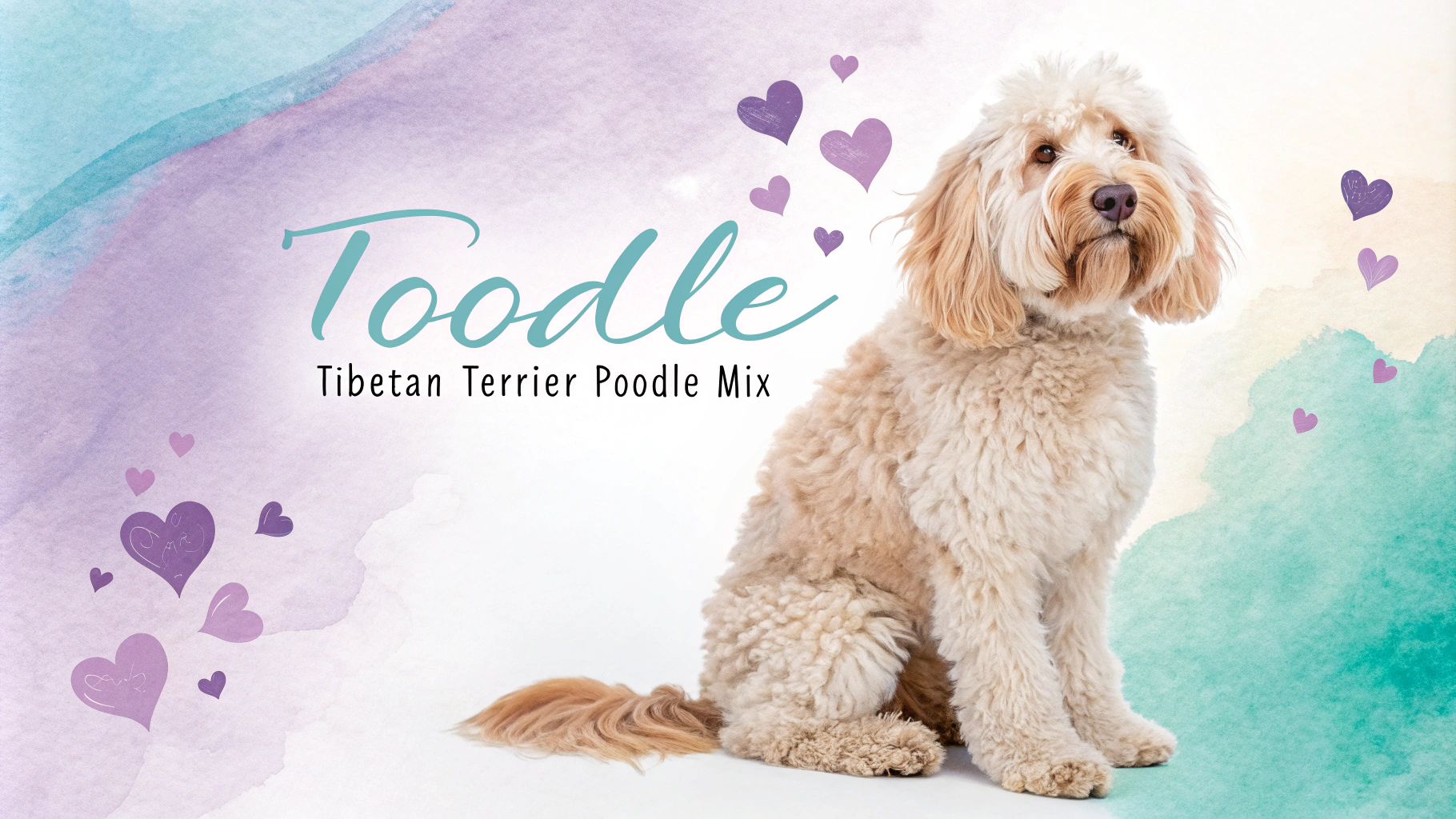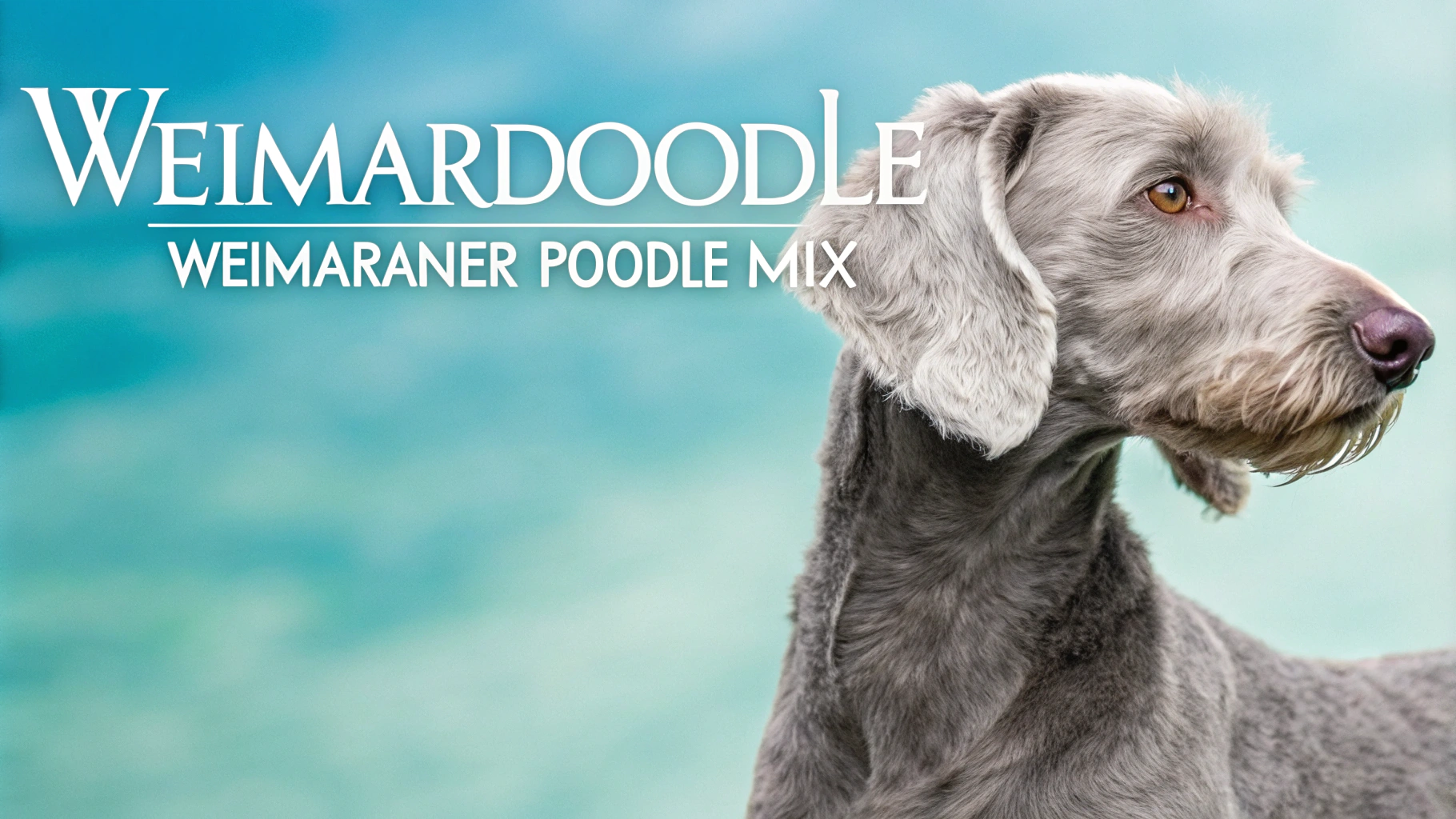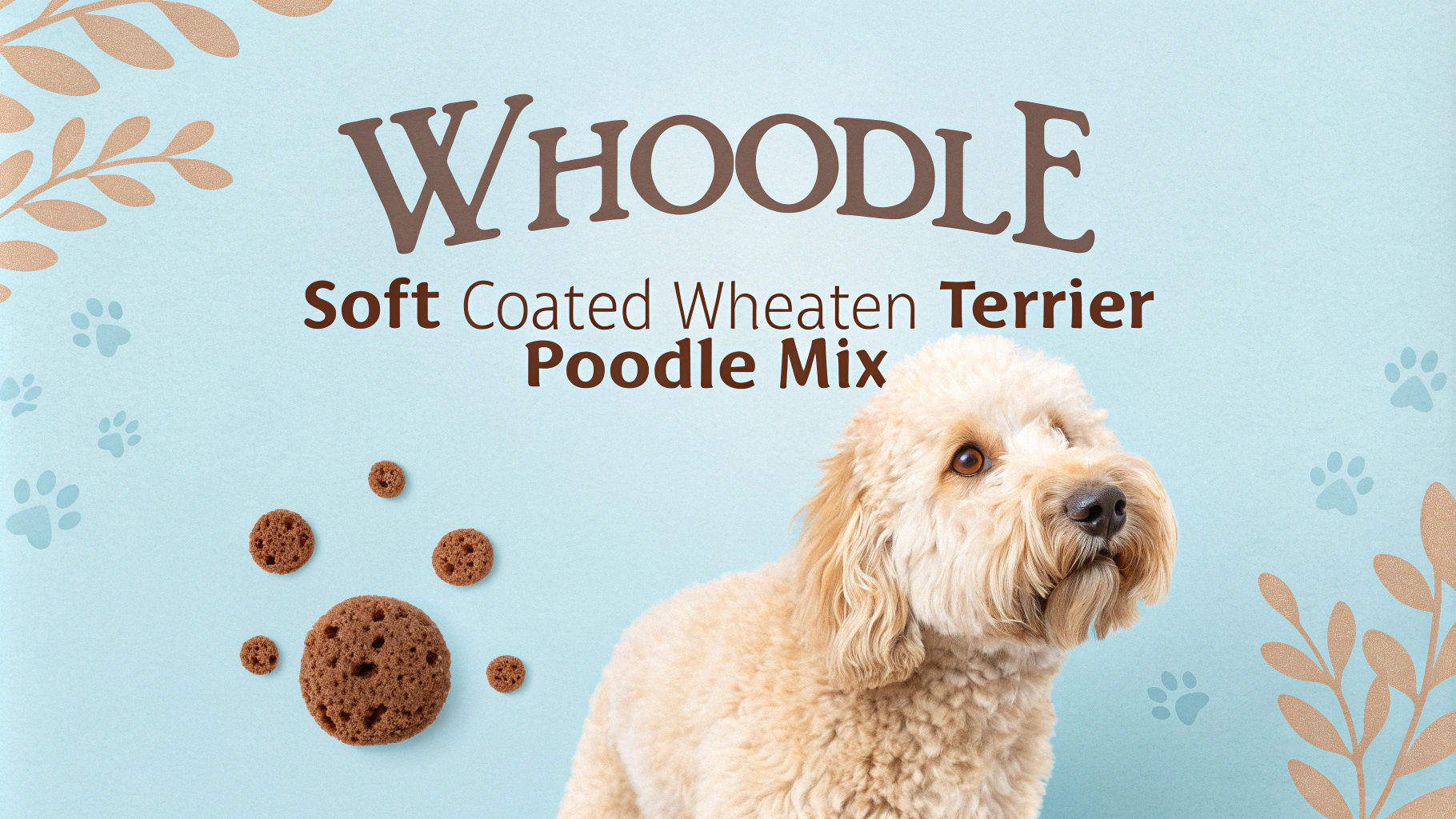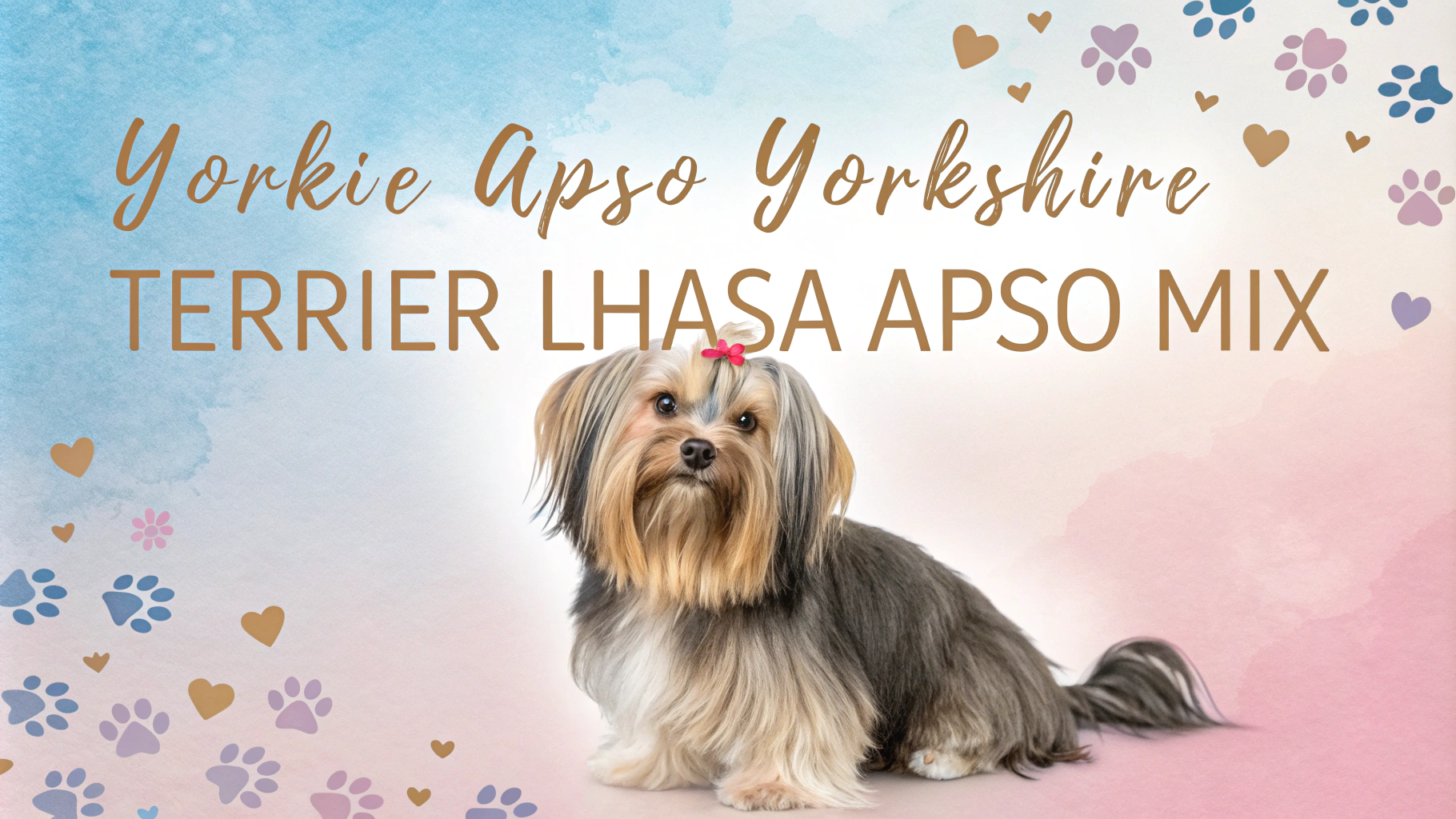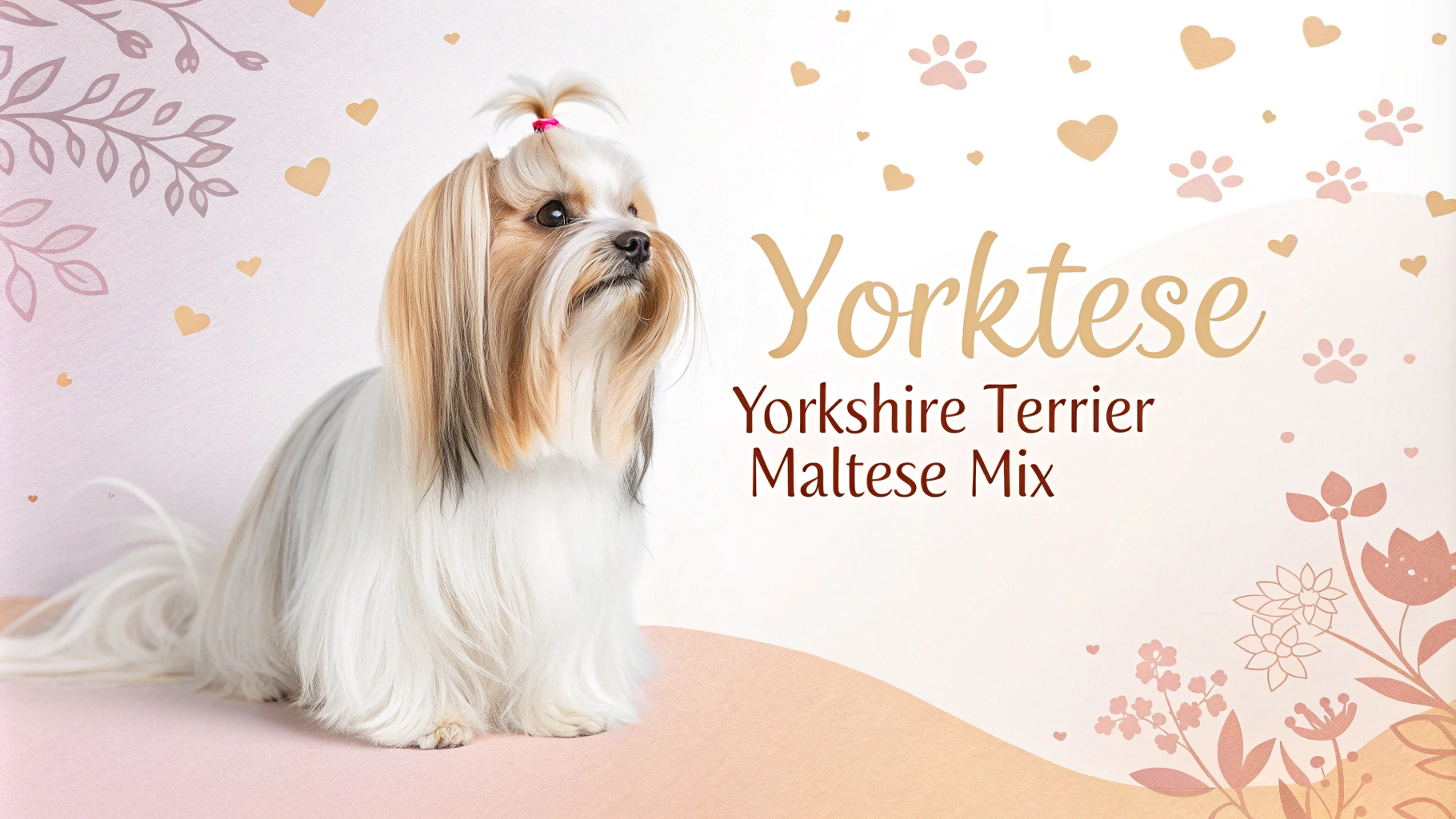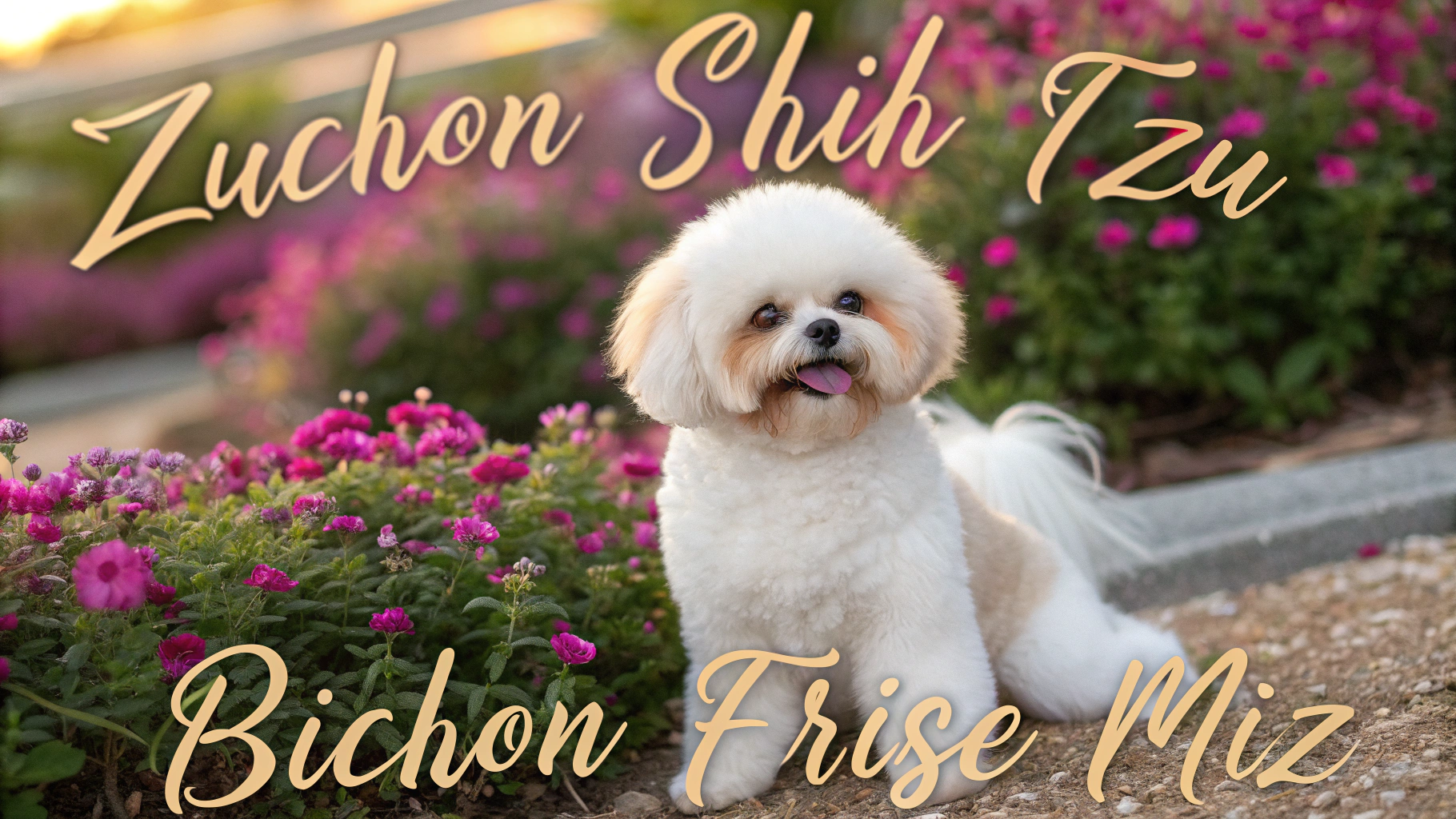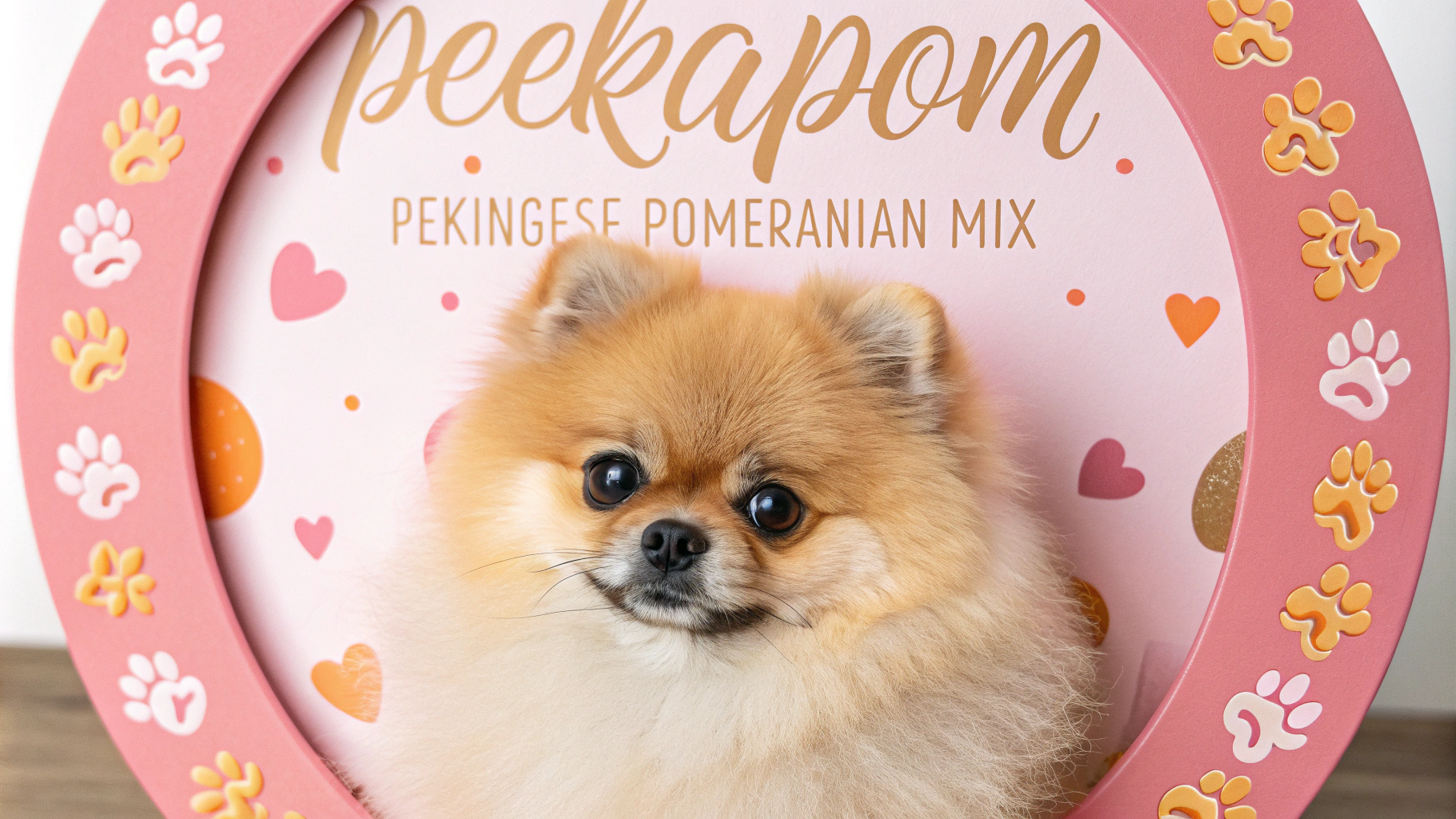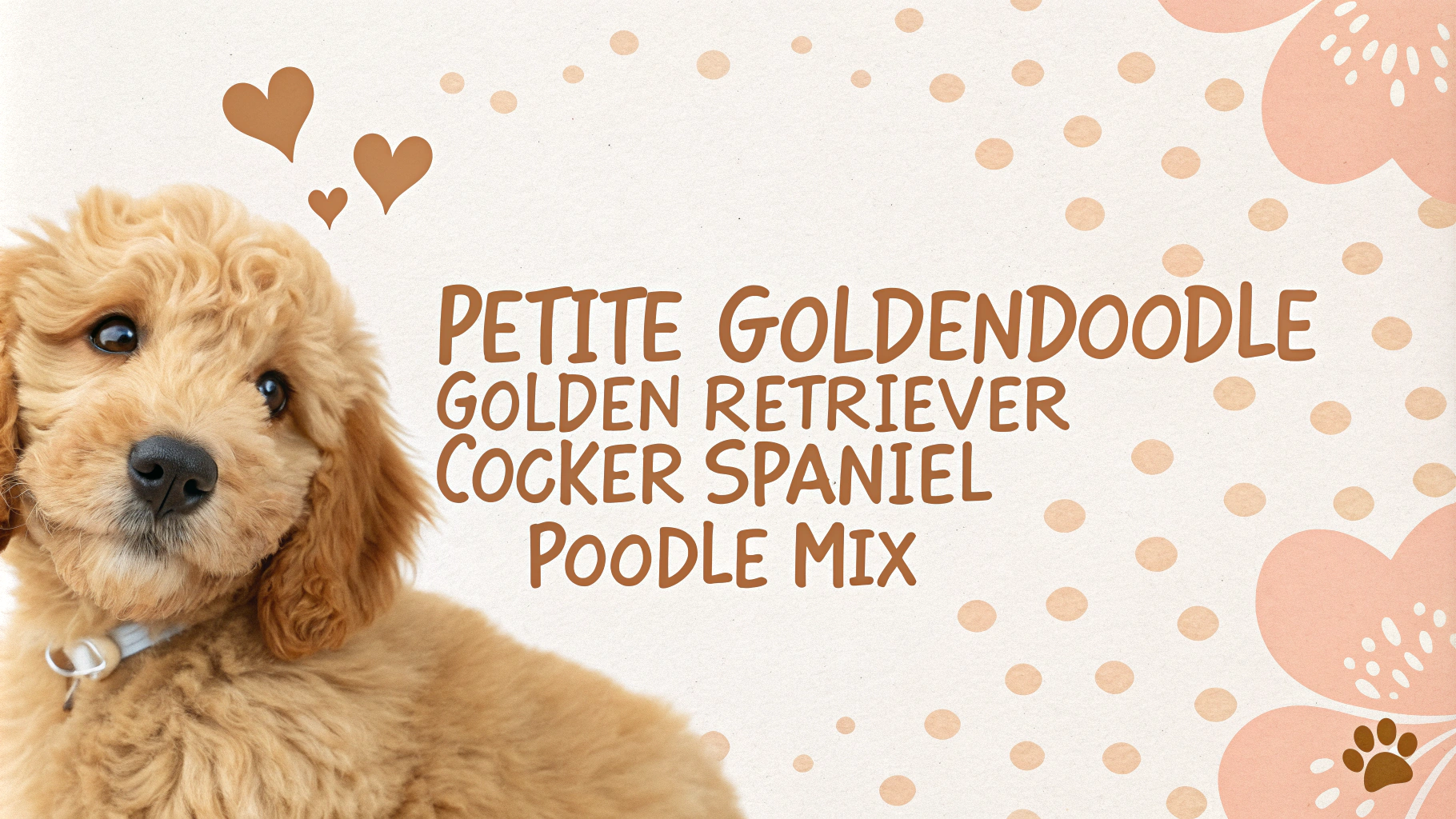The Shar-Poo is a mixed breed dog resulting from crossing a Chinese Shar-Pei with a Poodle. This unique combination blends the wrinkly, loyal Shar-Pei with the intelligent, hypoallergenic Poodle. Shar-Poos can inherit a range of physical and temperamental traits from both parent breeds, making each dog somewhat unique. They are generally medium-sized dogs with a sturdy build and a coat that can vary from short and bristly to longer and curly.
Key Facts
- Size: Medium, typically 15-20 inches tall and weighing 40-60 pounds
- Lifespan: 10-15 years
- Coat: Can vary from short and bristly to longer and curly, often low-shedding
- Colors: Various, including black, brown, cream, gray, and red
- Temperament: Intelligent, loyal, and sometimes stubborn
- Exercise needs: Moderate, requiring daily walks and play sessions
- Grooming: Regular brushing and occasional professional grooming
- Training: Can be challenging due to potential stubbornness, but responds well to positive reinforcement
- Good with children: Generally yes, but early socialization is important
- Good with other pets: Can be, but may have a strong prey drive
Character Traits
Shar-Poos often inherit a blend of personality traits from their parent breeds, resulting in a unique and complex temperament. They are typically intelligent dogs, thanks to the Poodle’s high cognitive abilities, which can make them quick learners but also prone to boredom if not mentally stimulated. The Shar-Pei influence often contributes to a strong sense of loyalty and protectiveness towards their family. This combination can result in a devoted companion that forms strong bonds with their owners.
These dogs may inherit the Shar-Pei’s independent and sometimes stubborn nature, which can present challenges during training. However, they also tend to be affectionate and enjoy spending time with their families. Shar-Poos can be aloof or wary of strangers, a trait common in Shar-Peis, but proper socialization from an early age can help mitigate this tendency.
Like Poodles, Shar-Poos are often energetic and playful, enjoying interactive games and activities with their owners. They may also inherit the Poodle’s love of water. The Shar-Pei’s calm and dignified demeanor might balance out this energy, potentially resulting in a dog that is both fun-loving and composed.
It’s important to note that individual Shar-Poos can vary greatly in temperament, depending on which parent breed’s traits are more dominant and the specific lineage of the parents. Some may be more Poodle-like in their outgoing and sociable nature, while others might lean towards the Shar-Pei’s more reserved and independent personality.
History & Origins
The Shar-Poo is a relatively recent mixed breed, likely originating within the last few decades as part of the designer dog trend. While the exact origins of the Shar-Poo are not well-documented, understanding the history of its parent breeds provides insight into the potential qualities of this mix.
The Chinese Shar-Pei has a long and storied history, dating back over 2,000 years to ancient China. Originally bred for various purposes including hunting, herding, and guarding, Shar-Peis were also used in dog fighting. They nearly went extinct in the 20th century but were saved through the efforts of dedicated breeders. Known for their distinctive wrinkled skin and loyal temperament, Shar-Peis have since gained popularity as companion dogs.
Poodles, despite their association with France, actually originated in Germany as water retrievers. Their name derives from the German word “pudel,” meaning “to splash in water.” Poodles were bred in three sizes – Standard, Miniature, and Toy – and became popular among European nobility. They are renowned for their high intelligence, elegant appearance, and hypoallergenic coat.
The creation of the Shar-Poo likely stemmed from a desire to combine the Shar-Pei’s unique appearance and loyal nature with the Poodle’s intelligence and low-shedding coat. As with many designer dog breeds, the goal was likely to produce a dog with the best traits of both parent breeds while potentially mitigating some of the health issues associated with purebreds.
It’s important to note that, as a mixed breed, Shar-Poos are not recognized by major kennel clubs like the American Kennel Club (AKC) or the United Kennel Club (UKC). However, they may be recognized by organizations that specialize in hybrid breeds, such as the Designer Breed Registry (DBR) or the International Designer Canine Registry (IDCR).
Health Concerns
The Shar-Poo, like many hybrid breeds, can inherit health issues from both parent breeds. Common concerns include:
- Skin problems: Inherited from the Shar-Pei side, these can include allergies, skin fold infections, and seborrhea.
- Eye issues: Both parent breeds are prone to various eye conditions, including entropion, cataracts, and progressive retinal atrophy.
- Hip dysplasia: A genetic condition that can affect both Poodles and Shar-Peis.
- Bloat: A potentially life-threatening condition more common in deep-chested dogs.
Regular veterinary check-ups, proper diet, and maintaining a healthy weight can help mitigate some of these risks. It’s also crucial to obtain a Shar-Poo from a reputable breeder who conducts health screenings on parent dogs.
Exercise Needs
The Shar-Poo typically has moderate exercise needs, reflecting a blend of the Shar-Pei’s lower energy levels and the Poodle’s more active nature. Daily exercise requirements include:
- 30-60 minutes of physical activity per day
- Regular walks (2-3 times daily)
- Interactive play sessions
- Mental stimulation through puzzle toys or training exercises
While not as high-energy as pure Poodles, Shar-Poos still benefit from consistent exercise to maintain physical and mental health. Activities should be adjusted based on the individual dog’s energy level and any health considerations, particularly in hot weather due to their potential for respiratory issues inherited from the Shar-Pei side.
Space Requirements
Shar-Poos are generally adaptable to various living situations, making them suitable for both apartments and houses with yards. Key space considerations include:
- Indoor space: A comfortable area for resting and playing, with room for a bed and toys.
- Outdoor access: While not essential, a fenced yard is beneficial for exercise and play.
- Exercise area: Access to parks or open spaces for walks and playtime is important, especially if living in an apartment.
These dogs can thrive in urban or suburban environments as long as their exercise and mental stimulation needs are met. However, they may not be well-suited to very small living spaces without regular outdoor access. The size of the individual Shar-Poo (which can vary depending on the Poodle parent’s size) should also be considered when determining space requirements.
Nutrition & Feeding
Proper nutrition is crucial for maintaining the health of a Shar-Poo. Feeding guidelines include:
- High-quality dog food: Choose a diet appropriate for the dog’s age, size, and activity level.
- Portion control: Monitor food intake to prevent obesity, which can exacerbate health issues.
- Feeding schedule: Typically, 2-3 meals per day for adults, more frequent for puppies.
- Special considerations: Some may require hypoallergenic diets due to skin sensitivities.
The exact amount and type of food will depend on the individual dog’s size, age, and activity level. Consult with a veterinarian to develop a tailored nutrition plan. Fresh water should always be available. Be cautious with treats and table scraps, as Shar-Poos can be prone to weight gain. Regular monitoring of body condition and adjusting food intake accordingly is important for maintaining optimal health.
Grooming Tips
The Shar-Poo’s grooming needs can vary depending on which parent breed it takes after more. If the coat is more Poodle-like, regular brushing (2-3 times a week) is necessary to prevent matting and tangling. For a coat more similar to the Shar-Pei, less frequent brushing may be required, but attention should be paid to skin folds to prevent irritation or infection. Bathing should be done as needed, typically every 4-6 weeks, using a gentle dog shampoo to avoid skin irritation.
Regular ear cleaning is essential to prevent infections, especially if the dog has floppy ears like a Poodle. Nail trimming should be done every 2-3 weeks or as needed. Dental hygiene is crucial, so brush their teeth 2-3 times a week to prevent dental issues. If the Shar-Poo inherits the wrinkles of the Shar-Pei, these folds need to be cleaned and dried regularly to prevent skin problems. Professional grooming every 6-8 weeks can help maintain the coat and overall hygiene of the dog.
Training Approach
Training a Shar-Poo requires patience, consistency, and positive reinforcement techniques. These dogs can inherit the intelligence of the Poodle and the independence of the Shar-Pei, making them potentially quick learners but also sometimes stubborn. Early socialization is crucial to ensure they develop into well-rounded adults. Begin training sessions when they are puppies, keeping them short and engaging to maintain their interest.
Use reward-based training methods, offering treats, praise, and toys as incentives. Avoid harsh corrections, as Shar-Poos can be sensitive and may become defensive or shut down. Focus on basic obedience commands like sit, stay, come, and leash training. Incorporate mental stimulation exercises to challenge their intelligence, such as puzzle toys or scent work. Consistency in rules and boundaries is essential, as these dogs may try to test limits. If training proves challenging, consider enrolling in professional obedience classes or working with a dog trainer experienced with mixed breeds.
